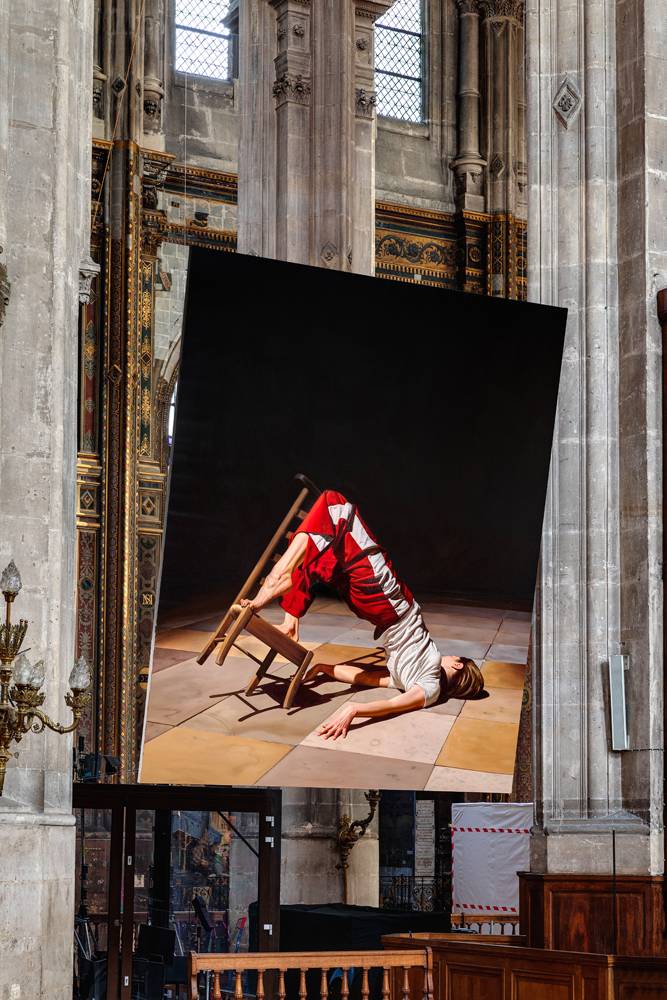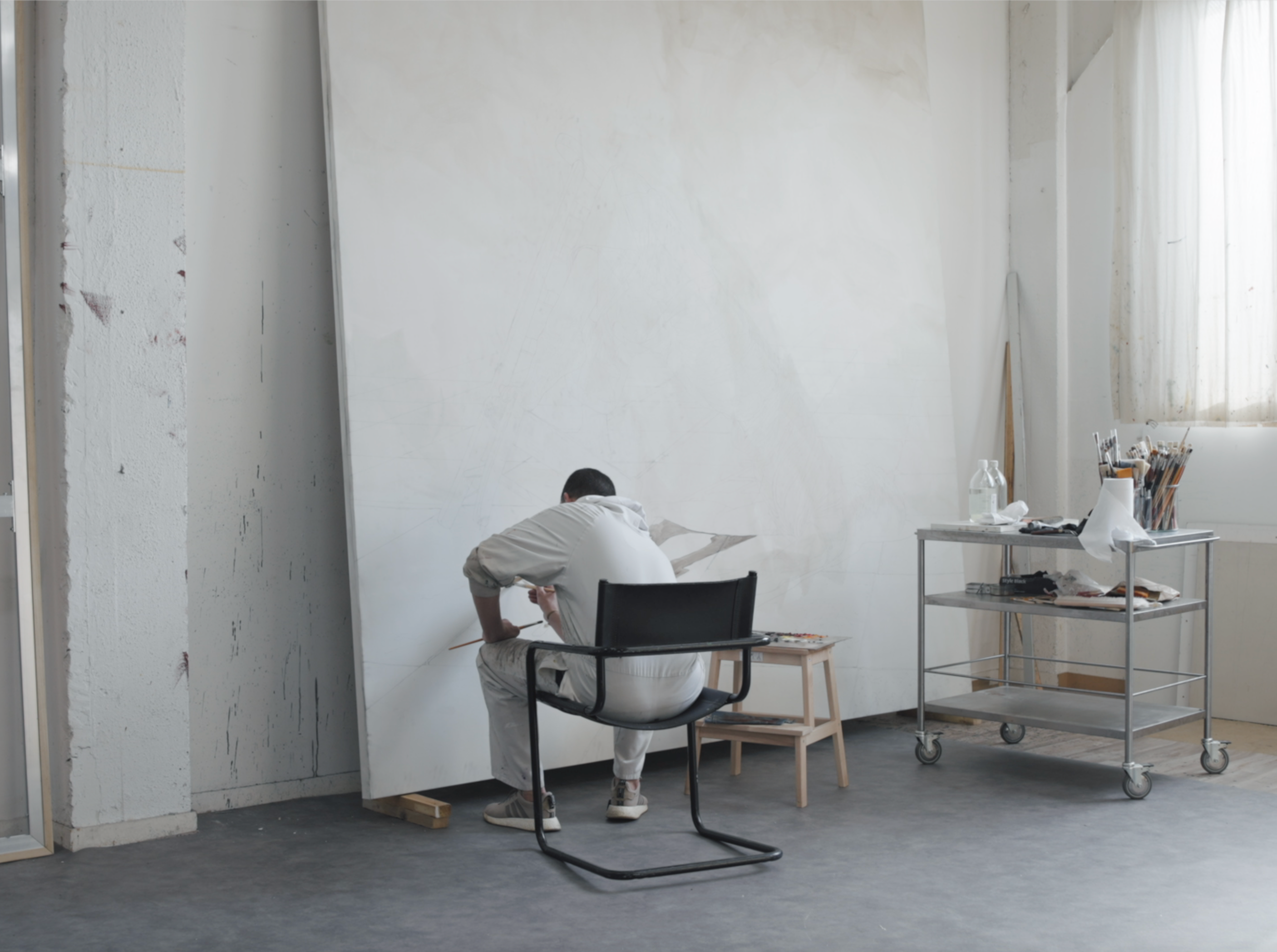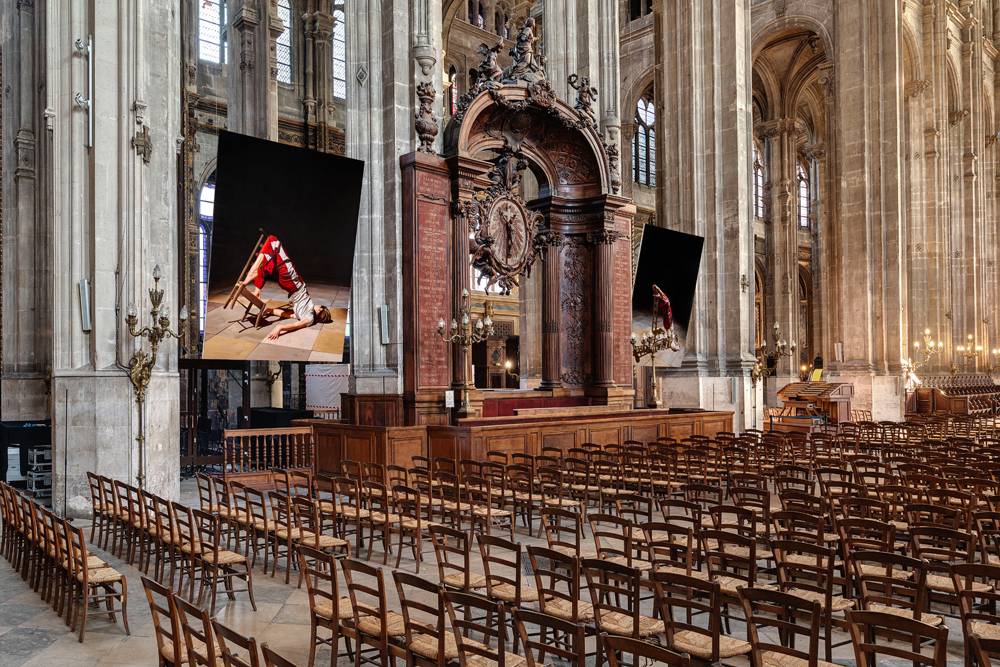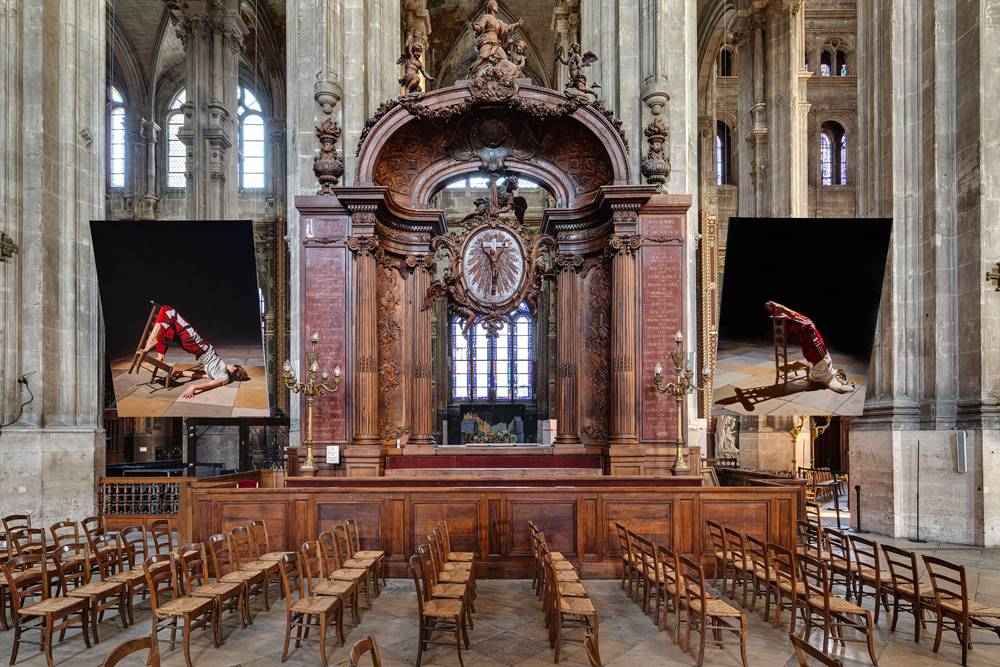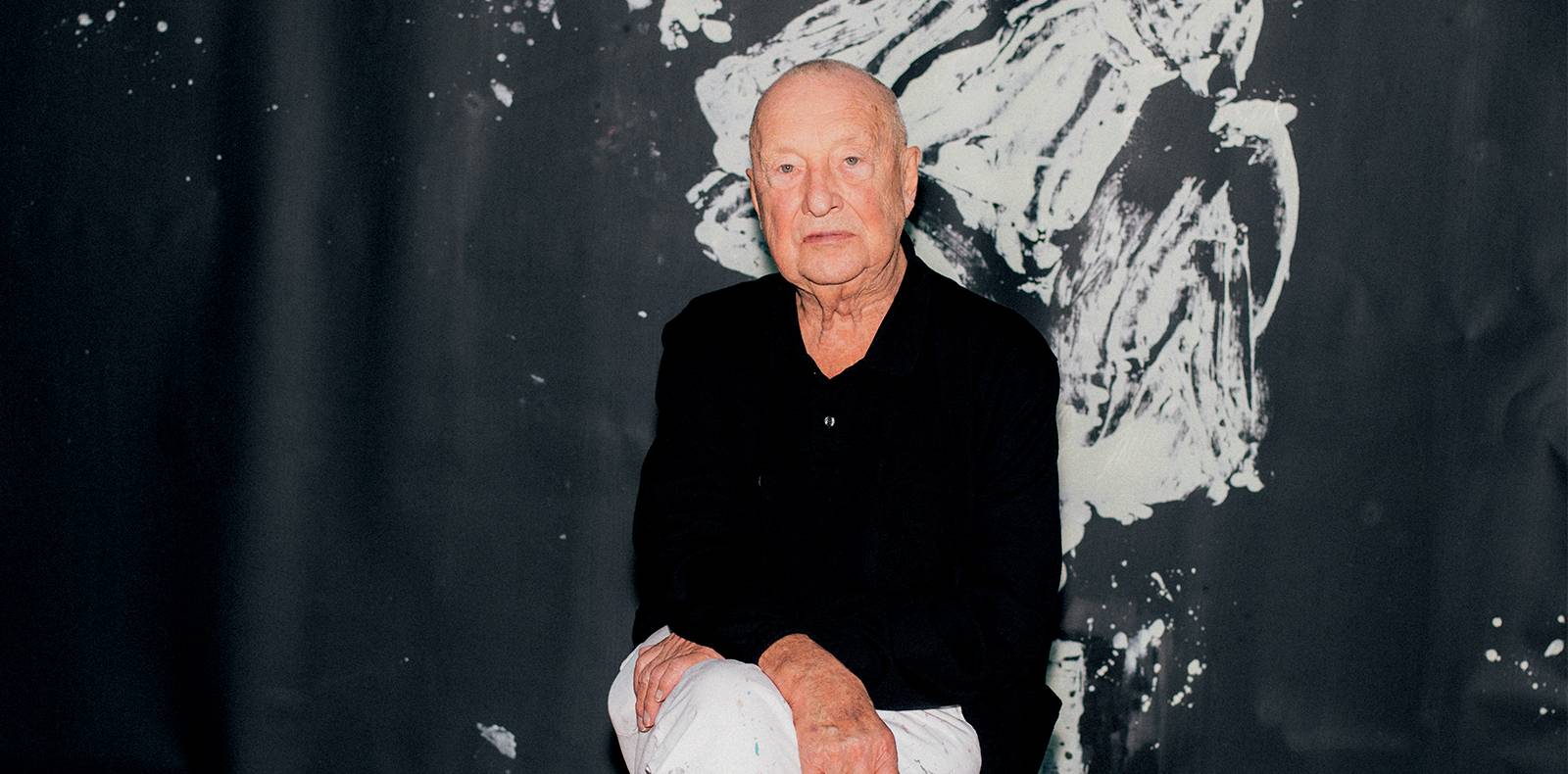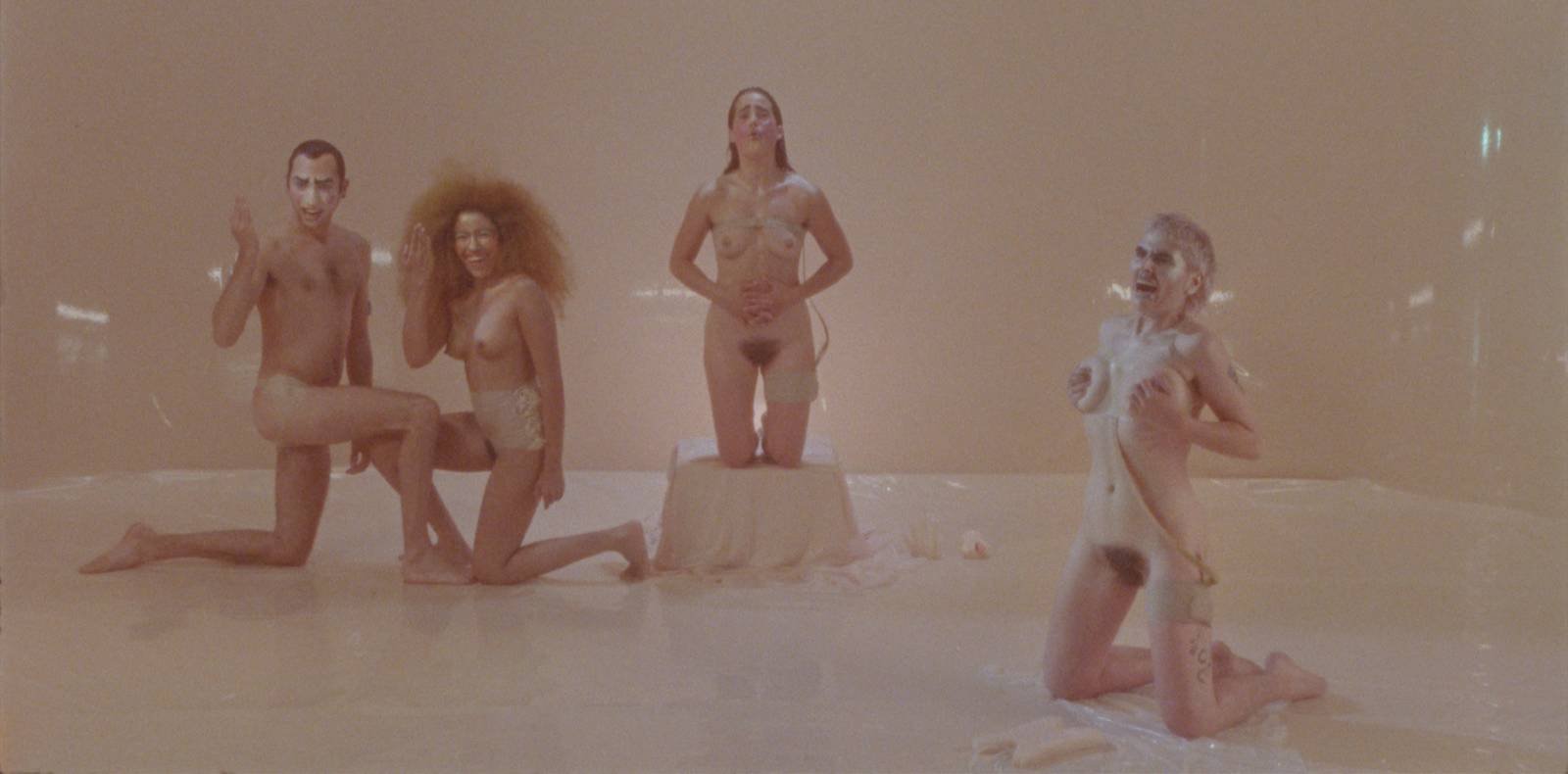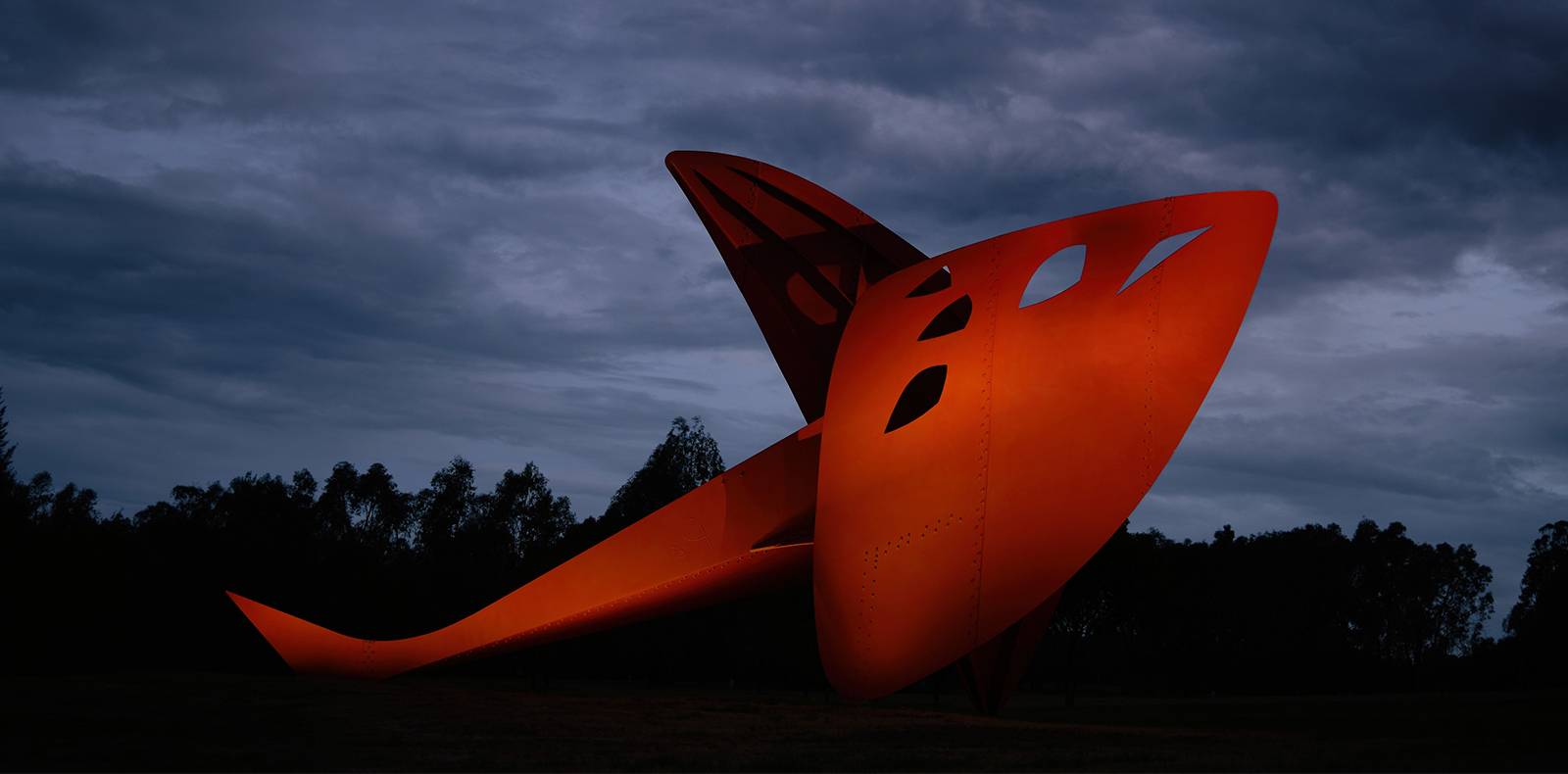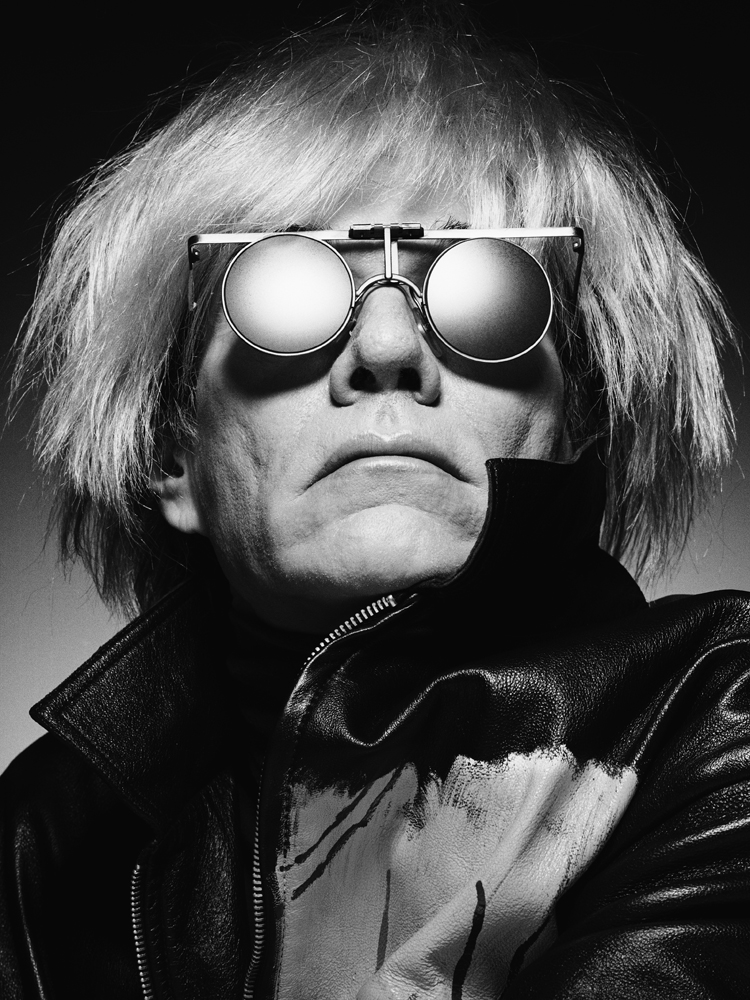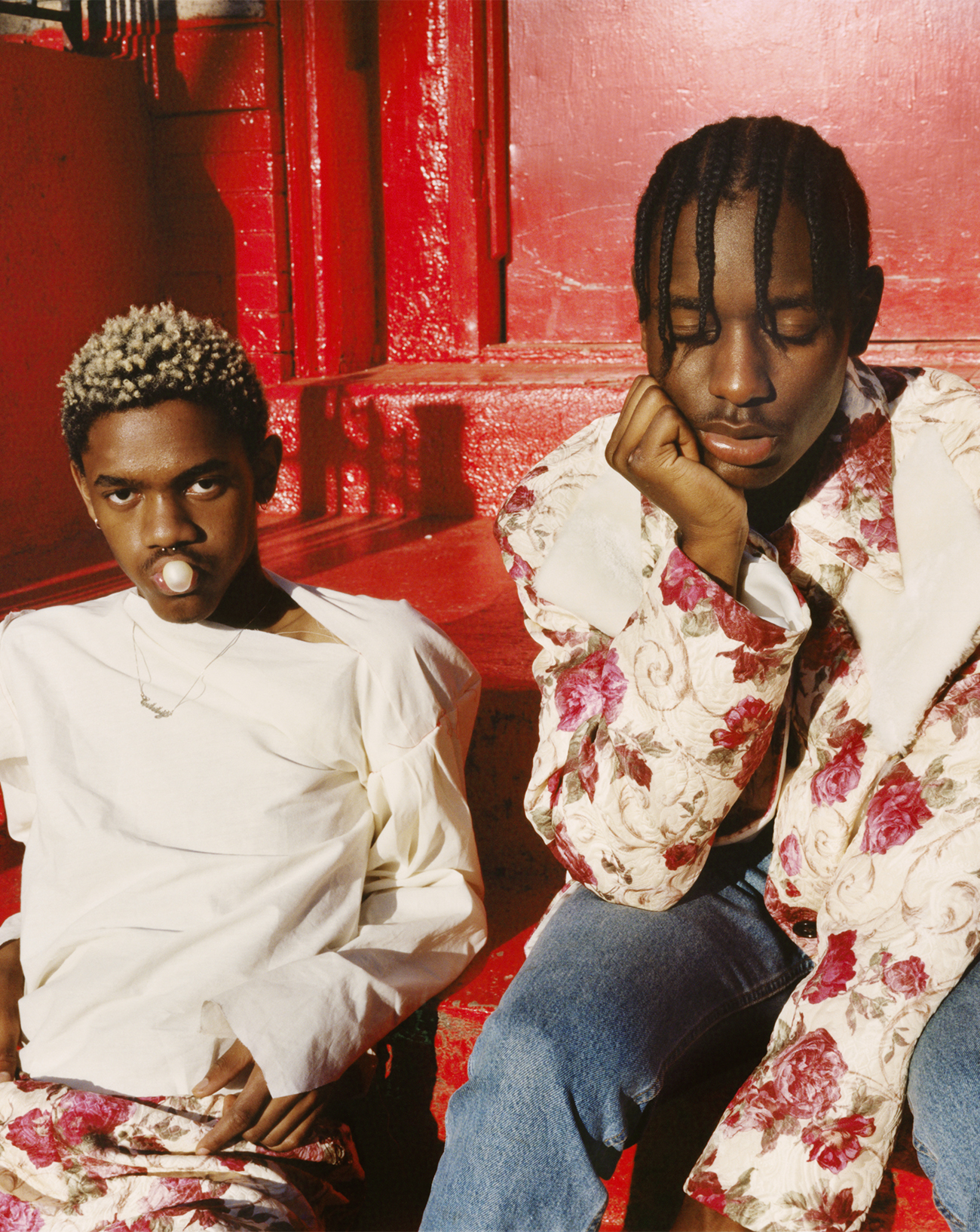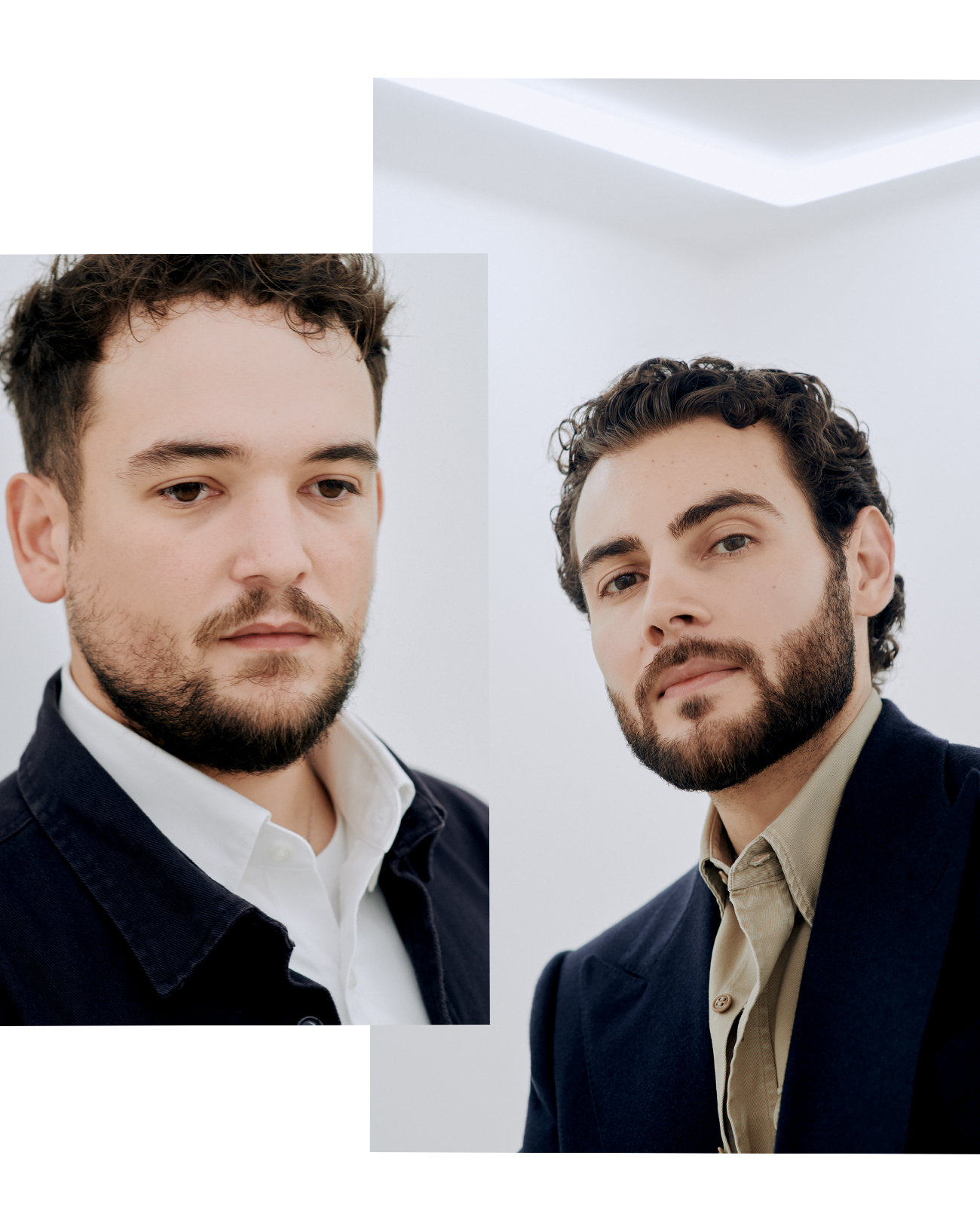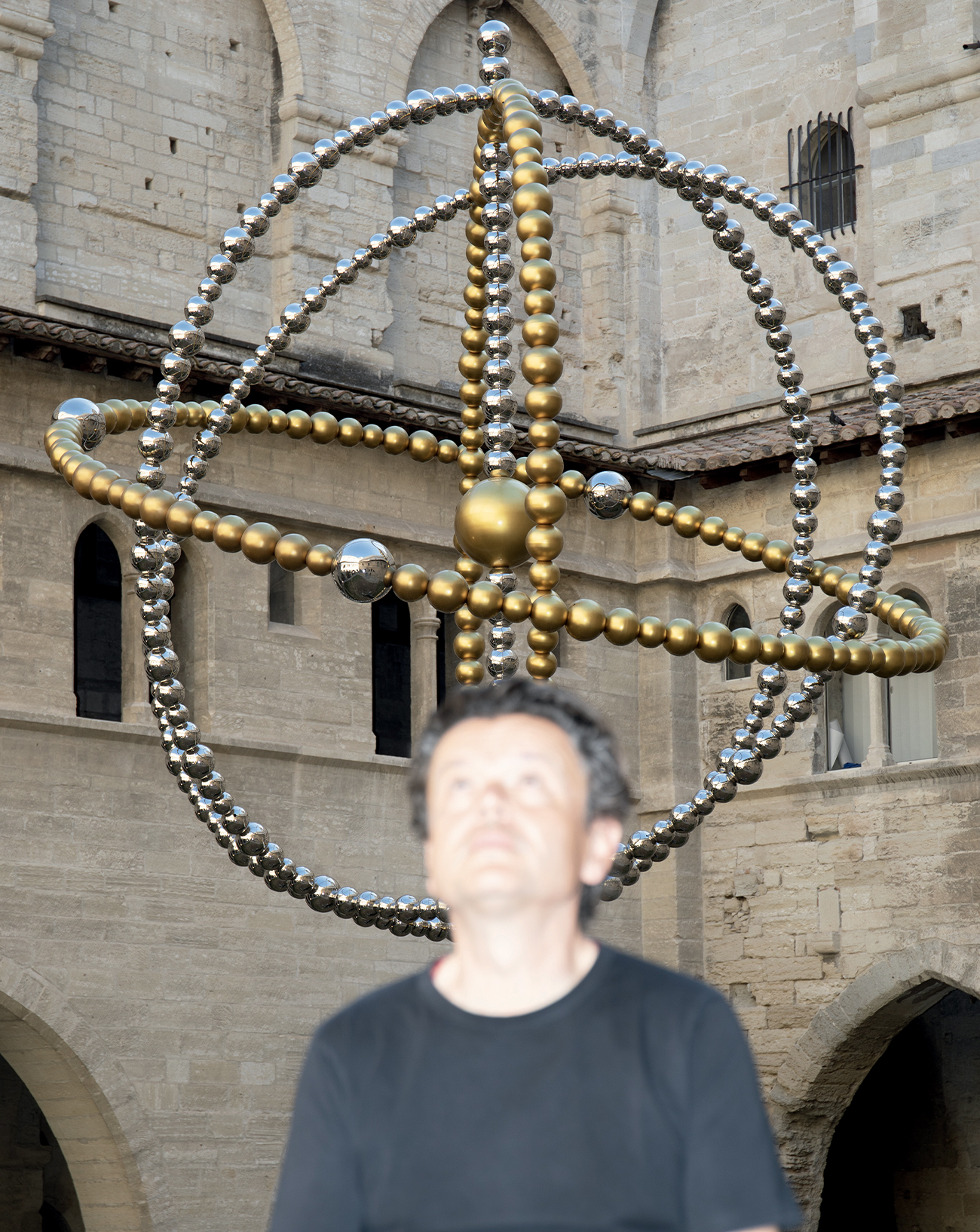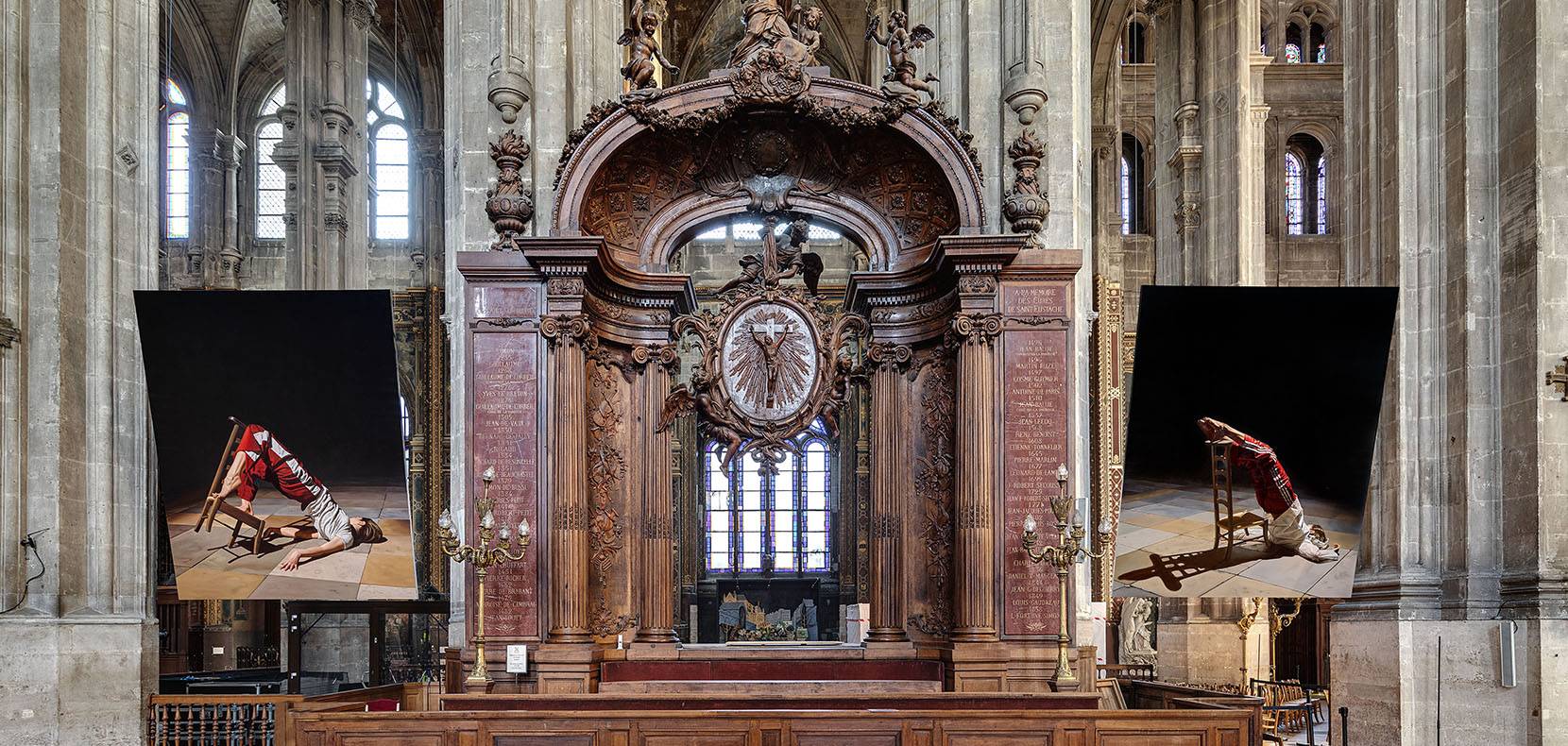
28
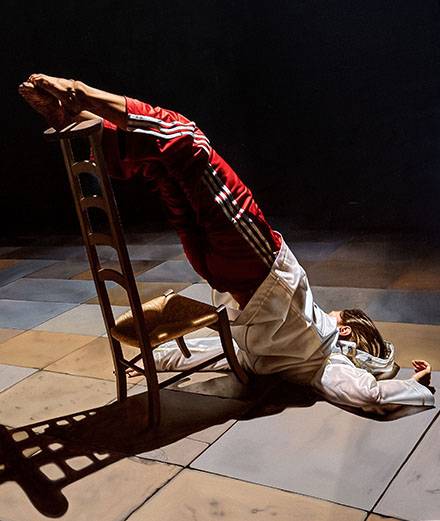
28
At Saint-Eustache, Rubis Mécenat unveils a monumental diptych
Until December 12, Algerian artist Dhewadi Hadjab is exhibiting two monumental canvases in the Saint-Eustache church in Paris’s 1st arrondissement. His ultra-realistic contemporary paintings – inspired by a fascination with dance and performance art – are integrated into the building’s metaphysical atmosphere by subtle references to liturgical furnishings.
Published on 28 October 2021. Updated on 10 March 2025.
Spotted by the jury of CRUSH, a new program dedicated to students at the Beaux-Arts de Paris, Dhewadi Hadjab’s work was exhibited alongside some forty other students from the school at an exhibition last February. The disquieting strangeness of his paintings earned him a place among the forty or so students selected to inaugurate Rubis Mécénat’s new support for the professionalization of young artists. Created in 2011, the endowment fund supports contemporary creation worldwide by developing artistic and social initiatives and implementing educational programs. At the same time, Rubis Mécénat supports artists by commissioning works in association with cultural institutions. Thanks to the sponsorship program, the church had already hosted an in situ installation by a student from the Beaux-Arts de Paris since 2012. To mark its tenth anniversary, Rubis Mécénat is launching a new support program in partnership with the Beaux-Arts de Paris and Saint-Eustache church. Winner of this first edition, Dhewadi Hadjab received a €5,000 endowment grant and €20,000 in production aid, enabling him to mount this exhibition at Saint-Eustache with the support of art critic Gaël Charbau, whom he curated. The painter joins a long list of artists who have worked in the church, including Christian Boltanksi and Bill Viola.
At Saint-Eustache church, near Les Halles, Algerian artist Dhewadi Hadjab deploys two gigantic canvases as bold as they are enigmatic. Rising to a height of three meters, his ultra-realistic diptych hangs in the center of the church building, like a majestic contemporary counterpart to the church’s Gothic architecture. Each painting depicts an upside-down young woman whose convulsed body tries to maintain its balance on a wobbly prie-dieu. They wear bright red jogging suits with reflective stripes, and their faces are hidden from view. Using the chiaroscuro technique, the artist plays with contrasts. Against deep-black backgrounds, the contorted bodies are highlighted by the concentrated light that bathes them. This magnetic diptych is inspired by liturgical furnishings and the metaphysical atmosphere of religious buildings.
Hanging on either side of the banc d’œuvre (a church pew once reserved for the parish’s notables), the two canvases blend into the sacred space, subtly multiplying references to space. Reproducing the church’s light-colored pavement in her two paintings, the artist also features shadows in the nave, using light to create such an effect of depth that her two-dimensional canvases almost seem to reach 3D – to melt into the physical space of the church – such is their striking realism. Amidst the descents from the cross and virgins with child, these constrained female bodies seem so real as to be disturbing. Dhewadi Hadjab’s painting may appear academic and extremely classic, but in reality, in its preliminary phase, it is nourished by photography. Placing her models in positions of extreme discomfort, the artist first photographs every detail of their acrobatic postures. From these shots, the artist then creates photomontages to create fictional postures – beyond the limits of the human body.
Pina Bausch meets Caravaggio… Both classical and contemporary, Dhewadi Hadjab’s painting is above all nourished by a fascination for dance and performance. Initially born of his friendship with a dancer, this attraction has been enriched over the years by the artist’s in-depth research into contemporary dance, particularly the work of German choreographer Pina Bausch. “Dance has always been a field of curiosity for me. But in dance, it’s that moment of failure that interests me, the moment when the pose unravels, when the posture is broken, when the body trembles as it searches for the right gesture.”explains the young painter, born in 1992 in M’sila, Algeria. While studying at the Beaux-Arts in Algiers, the painter dreamed of studying in France. To pay for his French lessons, he made copies of famous Orientalist paintings. After graduating from the Beaux-Arts de Bourges in 2019, Dhewadi Hadjab is now studying at the Beaux-Arts de Paris in the studio of painter Tim Eitel. The meticulous execution and refinement of his canvases are the result of a slow apprenticeship in classical painting, as well as a remarkable closeness to the world of dance and performance, whose movements he expresses to perfection. Two of the painter’s canvases – Dream Dancing and Posture du corps IV – are currently on display in the “Danser sur un volcan” exhibition at FRAC Franche-Conté, alongside works by Trisha Brown and Pipilotti Rist.
Spotted last February during the first edition of the Crush program initiated by the Beaux-Arts de Paris, Dhewadi Hadjab was selected from some forty candidates to inaugurate the new Rubis Mécénat grant. Created in 2011, this endowment fund supports contemporary creation worldwide through its artistic and social initiatives and educational programs. At the same time, Rubis Mécénat regularly invites young artists to take over atypical sites such as the Collège des Bernardins or the Palais de la Porte Dorée in Paris to create a site-specific installation. Since 2012, the church of Saint-Eustache has hosted a work created by a student of the Beaux-Arts de Paris, but this year the cultural fund is launching a new program in partnership with the Beaux-Arts de Paris. Winner of this first edition, Dhewadi Hadjab received a €5,000 endowment grant and €20,000 in production aid to enable him to stage this exhibition at Saint-Eustache, with the support of art critic Gaël Charbau, who curated the show. The painter thus succeeds a long list of artists who have worked in the prestigious religious building before him, including Christian Boltanksi and Bill Viola.
Carte blanche à Dhewadi Hadjab, commissioned by Rubis Mécénat in partnership with Beaux-Arts de Paris, runs until December 12 at Église Saint-Eustache, Paris I.
